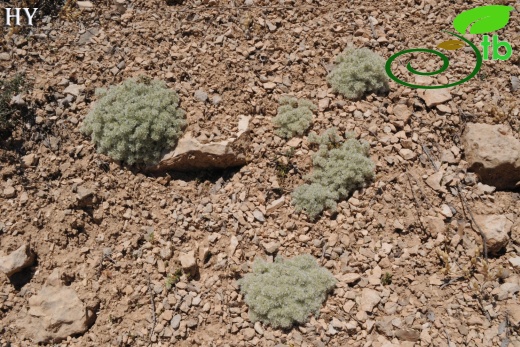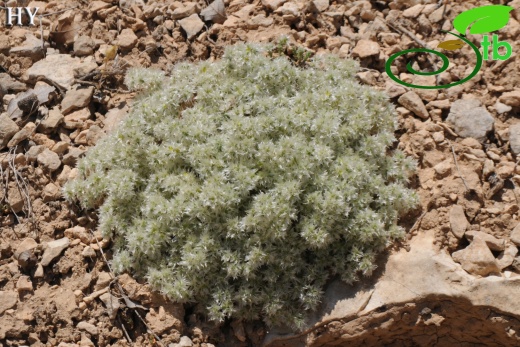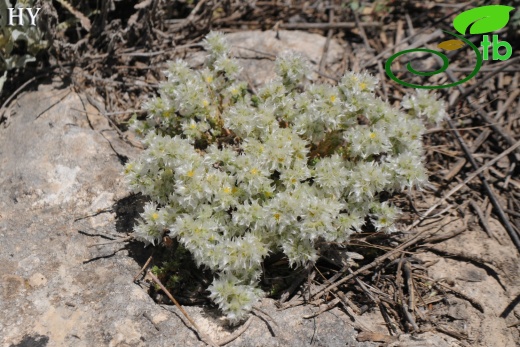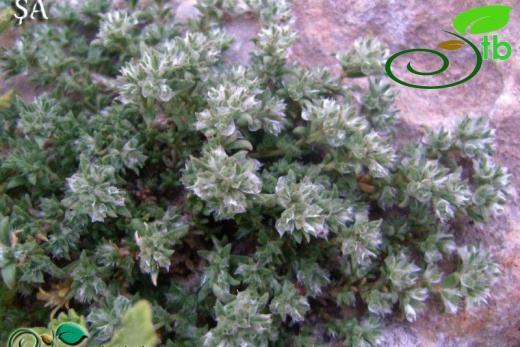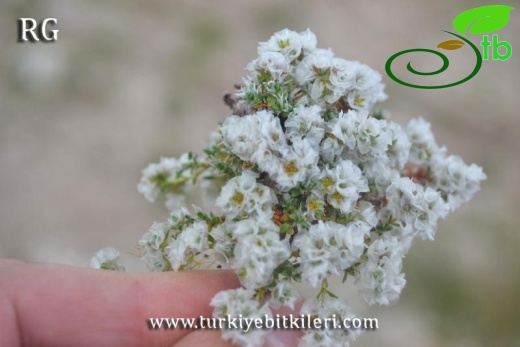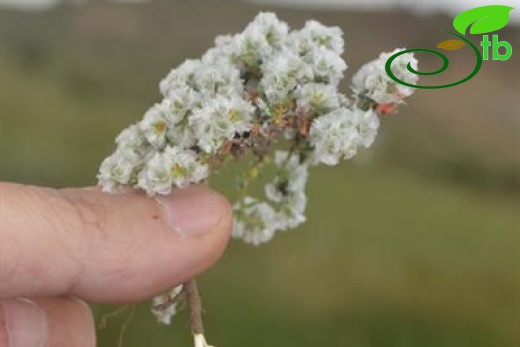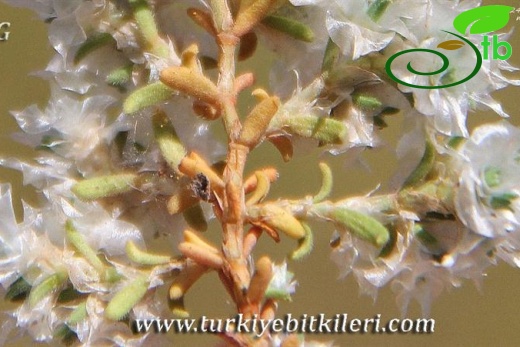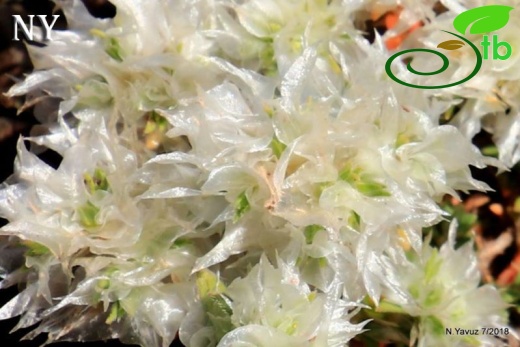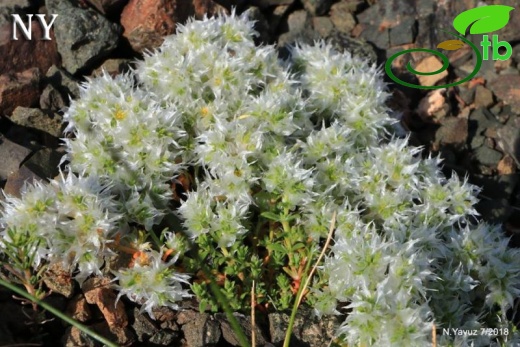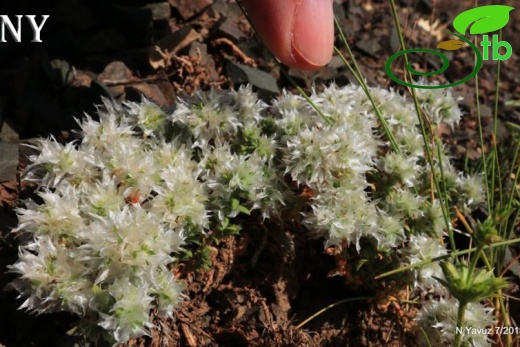Paronychia kurdica
Paronychia kurdica
Ssp haussknechtii: Kepekotu; Ssp kurdica: Boz kepekotu; Ssp montis-munzur: Munzur kepekotu
Procumbent herb, often compact and woody at base. Leaves 4-7 x 1-2 mm, narrowly oblong to oblanceolate, ± obtuse, thickish, pubescent. Stipules 4 per node, mostly shorter than the leaves. Glomerules 10-15 mm diam., profuse and congested. Bracts obliquely ovate, acuminate, almost 2 x longer than the flowers. Flowers 3-3,5 mm, pubescent. Sepals unequal, 3 long, 2 short,
narrowly oblong-Ianceolate, obtuse to acute, the outer recurved at tips. FI. 5-7. Rocky places.
A very variable species in which 3 subspecies are recognisable in Turkey:
1. Flowers 3,5-4 mm; sepals linear-lanceolate, sharply acute, much recurved subsp. montis-munzur
1. Flowers up to 3,5 mm; sepals narrowly oblong-lanceolate, obtuse, recurved at tips only
narrowly oblong-Ianceolate, obtuse to acute, the outer recurved at tips. FI. 5-7. Rocky places.
A very variable species in which 3 subspecies are recognisable in Turkey:
1. Flowers 3,5-4 mm; sepals linear-lanceolate, sharply acute, much recurved subsp. montis-munzur
1. Flowers up to 3,5 mm; sepals narrowly oblong-lanceolate, obtuse, recurved at tips only
2. Leaves often imbricate; glomerules 5 mm; bracts slightly exceeding but not concealing flowers; flowers 2-2,5 mm; sepals slightly unequal subsp. haussknechtii
2. Leaves often not quite imbricate; glomerules 10-15 mm; bracts usually concealing flowers; flowers ,3-3,5 mm; sepals markedly unequal subsp. kurdica
2a. Shoots not brittle; glomerules quite large, 10-15 mm diam var. kurdica
2a. Shoots very brittle; glomerules smaller, often few-flowered, axillary, dichasial cymes var. fragilis
2. Leaves often not quite imbricate; glomerules 10-15 mm; bracts usually concealing flowers; flowers ,3-3,5 mm; sepals markedly unequal subsp. kurdica
2a. Shoots not brittle; glomerules quite large, 10-15 mm diam var. kurdica
2a. Shoots very brittle; glomerules smaller, often few-flowered, axillary, dichasial cymes var. fragilis
Distribution of the species: S.W. Asia.




